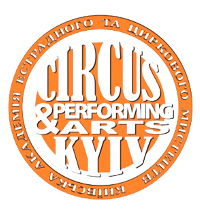USING POP SONGS IN TEACHING ENGLISH LANGUAGE TO STUDENTS MAJORING IN MUSIC ARTS. PHONOLOGICAL ASPECT
Abstract
In the process of foreign language acquisition, students can face various obstacles, which can prevent them from achieving the desired goal. English pronunciation is traditionally considered one of the most challenging issues, which require special approach and teaching techniques to tackle. Teaching English language using popular songs appears to be a very effective method as songs provide students with plethora of pronunciation patterns they can master in an effective and at the same time enjoyable way. Moreover, music influences students' feelings thus developing their emotional intelligence, ensure relaxed atmosphere in the classroom, thus motivating them to learn various aspects of English language. Another indisputable argument for using songs and music in the process of EFL/ESL teaching is that these two notions have a lot in common. Both language and music have acoustic parameters like pitch, duration, stress and intonation. Having analyzed the research works of domestic and foreign scholars and practitioners, it was concluded that popular songs can be used to practice all language skills – grammar, vocabulary, reading, listening, writing and most importantly, pronunciation skills. It is clear that inadequate phonetic interpretation of the vocal text can cause deviation from the original (authentic) content and result in total misunderstanding or spoilt aesthetic perception of a song. In the process of mastering pronunciation with vocalists, it is necessary to take into account the peculiarities of vocal speech too. The article focuses on the methodological value of popular songs in the development of phonetic abilities in students majoring in music arts. The article also outlines the difficulties students face in the process of honing phonological skills such as certain consonant sounds and diphthongs as well as connected speech and provides the methodological approach to using songs in the classroom. It is strongly advised that language instructors carefully select the songs, taking into account many factors such as the students' level of English, age, and interests, as well as the complexity of the songs and their rhythm. It is recommended to follow a certain sequence of activities when working on the song material in order to facilitate the process of improving pronunciation of English sounds
References
1. Carr, P. (2016). A Glossary of Phonology. Edinburgh: Edinburgh University Press Ltd. [in English]
2. Kellaris, J. & Cox, A. & Cox, D. (1993). “The Effect of Background Music on Ad Processing: A Contingency Explanation”, 114 Journal of Marketing, October, 1993, 57 (October, 1993) [in English]
3. Krashen, S. (1982). Principles and Practice in Second Language Acquisition. California: Pergamon Press Inc. [in English].
4. Kumaravadivelu, B. (2013). Beyond Methods: Macrostrategies for Language Teaching. Washington: Yale University [in English]
5. Kuśnierek, A. (2016) The role of music and songs in teaching English vocabulary to students. World Scientific News, 43(1) [in English]
6. Liddicoat, A.J. & Scarino, A. (2013). Intercultural Language Teaching and Learning. USA: Wiley and Blackwell [in English]
7. Millington, Neil T. (2011). “Using Songs Effectively to Teach English to Young Learners”. Journal of Language Education in Asia, 2011, 2(1), 134-141. Japan: Ritsumeikan Asia Pacific University [in English]
8. Roseboro, A.J.S. (2010). Teaching Middle School Language Arts: Incorporating Twenty-first-Century Literacies. UK: Rowman & Littlefield Education [in English]
9. Vasquez, A. & Hansen, A. & Smith P. (2010). Teaching Language Arts to English Language Learners. New York: Routledge [in English]

 ISSN
ISSN  ISSN
ISSN 



